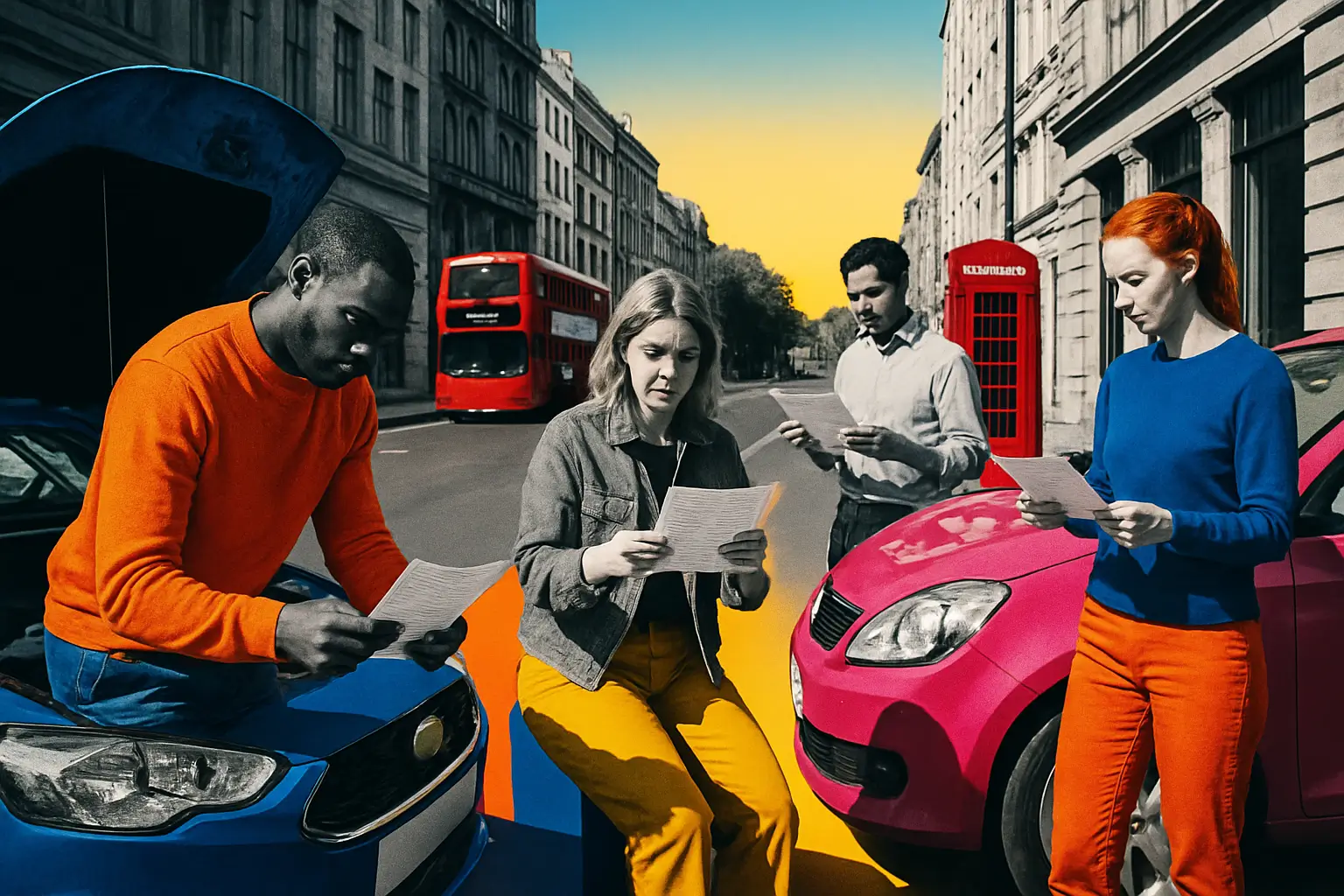UK drivers: separate fact from fiction on comprehensive cover, costs, excess, credit scores, mileage, DOC, NCB and SORN so you buy smarter and stay properly protected.
Myths that cost UK drivers money and vital cover
Understanding APR is one thing. Understanding car insurance realities is another. In the UK, several persistent myths can lead to the wrong cover and higher costs. Here is what actually affects your premium, what you are covered for, and how to choose better.
The cheapest policy is not always the best value.
Who needs this guidance
If you drive anywhere in the UK, are considering switching providers, or you have not reviewed your policy in the last year, this is for you. New drivers, city commuters, rural motorists and low-mileage owners will all find practical, money-saving insights.
Key terms explained clearly
- Comprehensive: Covers damage to your own car and third parties. Often priced close to third-party in the UK due to competition.
- Third-party only (TPO): Covers damage or injury you cause to others. No cover for your own vehicle.
- Third-party, fire and theft (TPFT): TPO plus protection if your car is stolen or catches fire.
- Excess: The first part of a claim you pay. Compulsory and voluntary excess may apply.
- No Claims Bonus (NCB): Discount for claim-free years. Can be protected for an extra cost.
- Driving Other Cars (DOC): Limited permission on some policies to drive another car, usually third-party only and subject to strict conditions.
- Telematics: Black box or app-based policies that price using driving data.
- SORN: Statutory Off Road Notification. Declares a vehicle off public roads, removing the need for insurance and tax while it is kept off-road.
- Modifications: Any changes from factory spec. Must be declared or cover can be invalid.
Short standout: Comprehensive is often similar in price to third-party in the UK, while providing wider protection.
Your cover choices and how they compare
Many UK drivers assume third-party is cheaper. In practice, comprehensive is often similarly priced, sometimes cheaper, and gives more protection. Here is a quick comparison to help you pick the right fit.
| Cover type | Typical UK price trend | Own car cover | Third-party cover | Windscreen | Courtesy car | DOC possible |
|---|---|---|---|---|---|---|
| Comprehensive | Often similar to TPO/TPFT | Yes | Yes | Often included | Often included | Sometimes, limits apply |
| TPFT | Sometimes similar to comprehensive | Fire and theft only | Yes | Sometimes optional | Rare | Rare |
| TPO | Not always cheapest | No | Yes | No | No | Rare |
Notes:
- DOC is usually third-party only, requires owner permission, and excludes damage to the borrowed car.
- Check policy schedules for add-ons like roadside assistance, legal cover and personal accident.
Costs, impacts and risks that move your premium
- Premiums can rise even without claims due to inflation, market loss ratios, changing accident frequencies and updated risk models. A clean record helps but does not freeze prices.
- Excess may still be payable initially after incidents with uninsured or untraced drivers. You may recover it later, but expect an upfront outlay.
- Low mileage is not a guarantee of cheap cover. Some underwriters view very low mileage as limited experience or urban stop-start risk. Always supply accurate mileage.
- Credit behaviour matters. Many UK insurers factor credit scores into pricing as a proxy for risk. Strong credit can reduce costs.
- Undeclared modifications can void claims. Declare everything from alloy upgrades to performance tuning and infotainment changes.
Price parity myth: comprehensive is often similar in cost to third-party, so do not pay more for less cover.
Who typically qualifies and where limits apply
- DOC: Often restricted to drivers over 25 with specific comprehensive policies. Always check your certificate of motor insurance before driving another car.
- NCB protection: Usually available after one to five claim-free years, depending on insurer. It protects your discount, not your base premium.
- SORN: If your car is kept entirely off public roads, you can SORN it and drop insurance. The moment it is on a public road, tax and insurance are mandatory.
- Modifications: Some insurers accept cosmetic changes, others load premiums or decline. Performance modifications carry higher scrutiny.
- Telematics eligibility: Common for young drivers, but increasingly available to all ages looking to prove safe driving.
- Vehicle use and postcode: Commuting, delivery use, multi-car households and urban postcodes may affect eligibility and price.
Step-by-step to smarter cover
- List how you use the car weekly and yearly.
- Gather exact mileage, security, parking and driver details.
- Decide on comprehensive vs TPFT vs TPO benefits.
- Check exclusions on DOC and named drivers carefully.
- Declare every modification, factory or aftermarket.
- Compare at least three quotes on identical terms.
- Consider NCB protection and telematics options.
- Review excess levels and total cost of ownership.
Benefits and drawbacks at a glance
Pros
- Comprehensive protection often for similar money to third-party.
- Optional extras like windscreen and courtesy car improve resilience.
- Telematics can reward careful driving and reduce costs.
Cons
- Premiums may still rise despite no claims.
- DOC is limited and can be misunderstood, risking uninsured driving.
- Higher voluntary excess lowers premiums but raises out-of-pocket risk.
Watch-outs before you commit
- Do not assume you can drive any car. DOC is rare and restricted.
- Expect to pay your excess even if another party is at fault in uninsured or untraced cases.
- Low mileage does not guarantee savings. Provide accurate figures to avoid invalidation.
- Failing to report incidents, even without a claim, can breach policy terms and affect future payouts.
- NCB protection does not freeze your premium. It protects the discount only.
Alternatives and ways to optimise
- Telematics policies can cut costs if you drive smoothly at safer times.
- Temporary car insurance for short-term borrowing is often better than relying on DOC.
- Multi-car policies can reduce household costs, but still compare individual quotes.
- Classic or limited mileage policies may suit older vehicles with restricted use.
- Consider add-ons selectively: legal cover, breakdown, key cover and courtesy car can be cost-effective.
Frequently asked questions
-
Is comprehensive always more expensive than third-party? No. In the UK, comprehensive is often similarly priced to third-party, sometimes cheaper, due to competitive pricing.
-
Can I drive any car if I am fully comp? Usually not. DOC is limited, often third-party only, and requires owner permission. Many policies exclude it entirely.
-
Why did my premium rise when I made no claims? Market inflation, parts costs, updated risk models and wider accident trends can all lift premiums irrespective of your record.
-
Will I pay my excess if the other driver is uninsured? Often yes, initially. You may later recover it via the insurer or schemes, but expect an upfront payment.
-
Does my credit score affect car insurance in the UK? Yes, many insurers consider credit behaviour. Strong credit can help reduce premiums.
-
If I drive fewer miles, will I always save? Not always. Very low mileage can be priced higher by some insurers. Accuracy remains vital.
-
Do I need to tell my insurer about modifications? Yes. Failure to disclose can void cover and claims.
What to do next
- Audit your current policy for DOC, excess, NCB and exclusions.
- Compare like-for-like comprehensive quotes. Look at total value, not just price.
- Consider NCB protection, telematics and the right excess balance.
- If your car is off-road, evaluate SORN status to avoid unnecessary costs.
Short standout: Switching smartly can improve cover without inflating cost.
Important information
This guide is general information for UK motorists. It is not personalised advice. Policies vary by insurer and individual risk. Always read your policy schedule and certificate, and confirm cover details with your insurer or broker before driving.
Get smarter with your money
Join thousands of people in the UK who are taking control of their financial future

FAQs
Common questions about managing your personal finances
Begin by tracking every expense for one month. Use an app or spreadsheet. No judgment. Just observe your spending patterns.
Cancel unused subscriptions. Cook at home. Compare utility providers. Small changes add up quickly.
Aim for 20% of your income. Start smaller if needed. Consistency matters more than the amount.
Choose reputable apps with strong security. Read reviews. Check privacy policies. Protect your financial data.
Pay bills on time. Keep credit card balances low. Check your credit report annually. Be patient.
Still have questions?
Our team is ready to help you navigate your financial journey
More financial insights
Explore our latest articles on personal finance and money management




